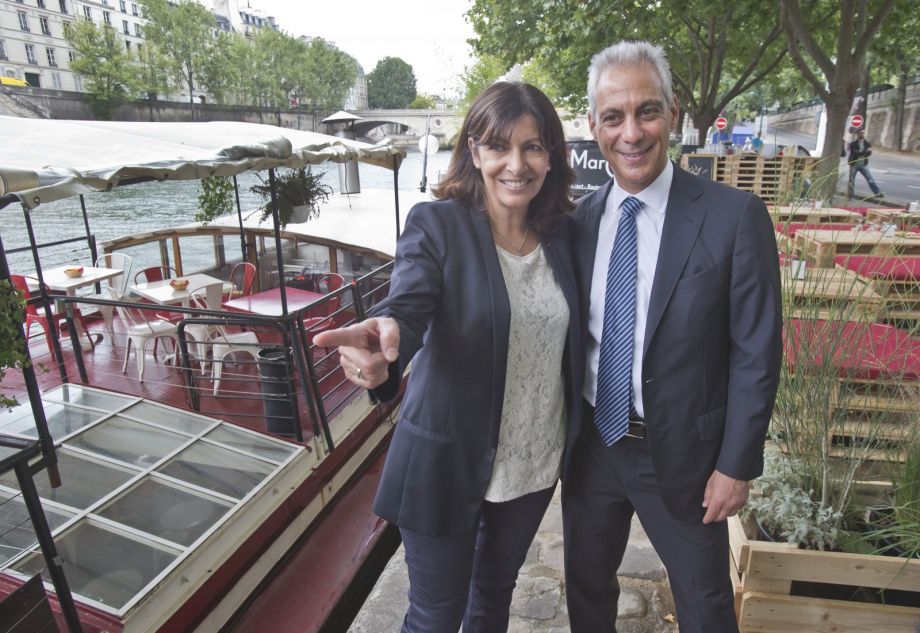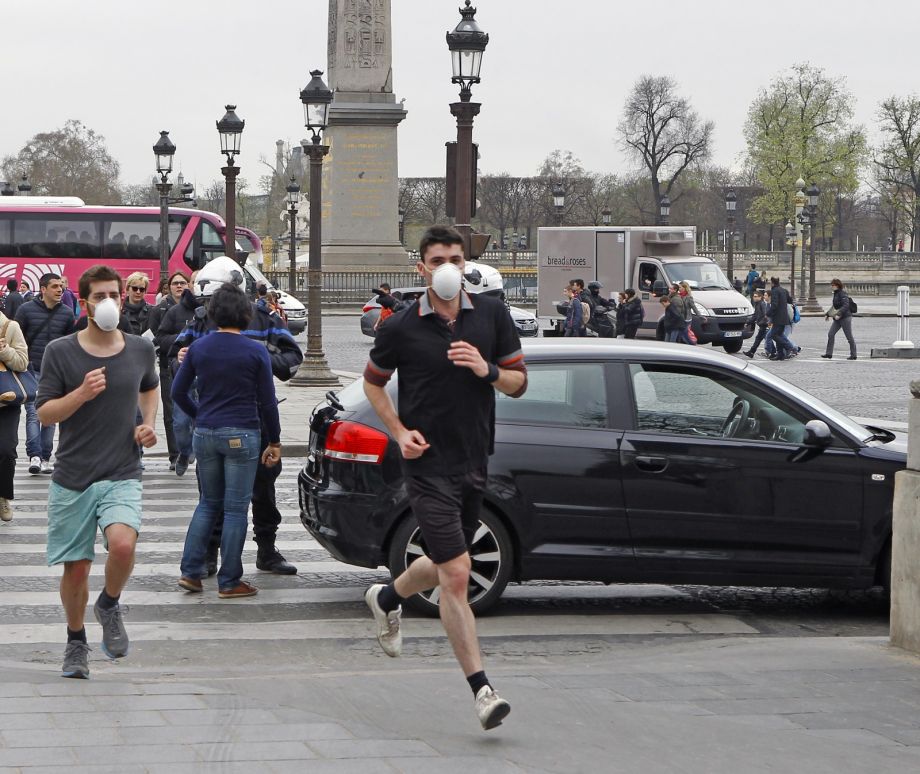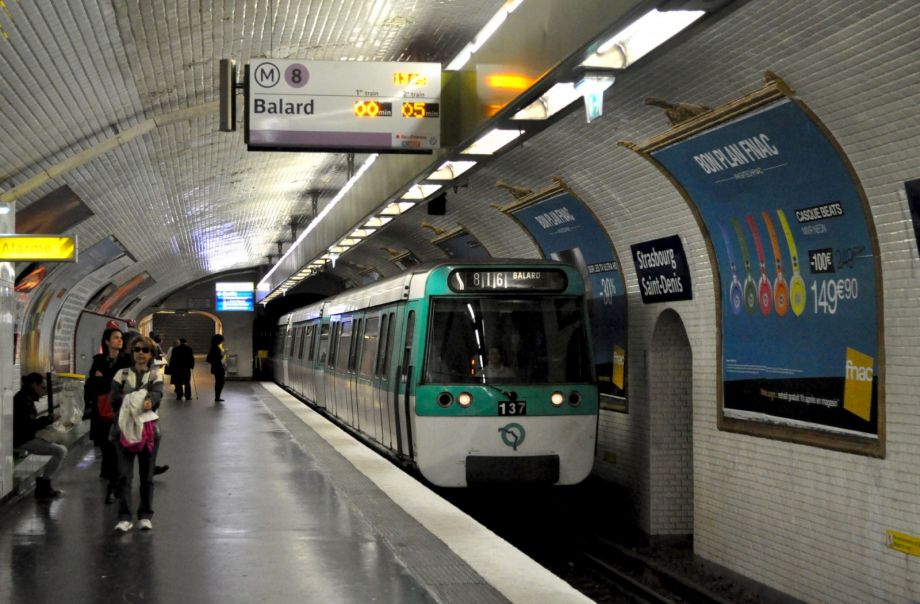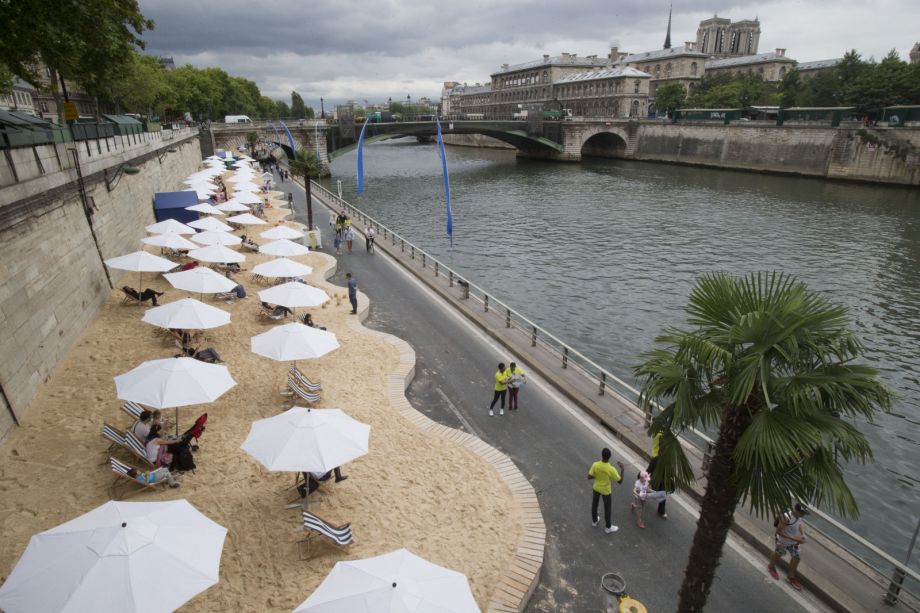Are You A Vanguard? Applications Now Open
This is your first of three free stories this month. Become a free or sustaining member to read unlimited articles, webinars and ebooks.
Become A MemberThis season, the international spotlight has shone on Paris more intently than it has for years. Tragedy brought the world’s eyes — a spate of lethal terrorist attacks, carried out in everyday settings made even more disturbing by their apparent arbitrariness. Yet with the city now playing host to the long-planned U.N. Conference of Parties (COP21) climate talks, it’s important to remember that world leaders have descended on a city not only in mourning, but also in the throes of its own negotiations for a greener future.
Paris’ drive toward sustainability traces back to an earlier climate conference — COP3, held in Kyoto, Japan, in 1997. The fruit of COP3 was the Kyoto Protocol, a hard-fought (if ultimately troubled) international treaty establishing legally binding emission targets for 37 developed nations and 15 European countries that were then part of the European Union. Fast-forward to 2007 when French President Nicolas Sarkozy, seeking to build his legacy, turned his eyes to the nation’s capital and saw a historic city that wasn’t quite ready for the challenges on the horizon, namely climate change and growing cultural and economic disparities between Paris and the suburbs that ring the city. He set out to make Paris the first city to conform to the goals laid out in the Kyoto agreement. In time, the lofty goal proved politically challenging and by the time Sarkozy left office in 2012, much of the plan was stalled.
Among the plan’s surviving elements was an ambitious expansion of the region’s transit network that promised to reduce the region’s carbon footprint by getting commuters out of their cars while improving connections between Paris and its suburbs. And as world leaders return to the negotiating table to hammer out a new legally binding agreement to cut carbon emissions, that expansion — the Grand Paris Express — lives on among a package of environmental policies and projects championed by Paris Mayor Anne Hidalgo.

Paris Mayor Anne Hidalgo, left, and fellow sustainability champion Chicago Mayor Rahm Emanuel pose next to a riverboat restaurant along the Seine river. (AP Photo/Michel Euler)
These policies significantly expand the ambition of the earlier measures by introducing new regulations designed to radically minimize the number of motor vehicles — especially high-polluting ones — in the city core. They also expand other initiatives, such as the pedestrianization of the Seine quayside, begun under Hidalgo’s predecessor, Mayor Bertrand Delanoë. Together, they form a comprehensive strategy that Hidalgo has said will reduce carbon emissions by 75 percent by 2050, a goal that she challenged the worlds’ mayors to adopt in the lead up to the COP21 talks.
“Paris is a concrete example of how actions taken locally — whether a bike-share program, a building retrofit program or even hosting international climate talks — can have widespread global impacts,” Hidalgo said in a recent public statement. “Parisians are extremely proud of the steps we are taking to tackle climate change and hope our efforts can inspire global leaders to strengthen their pledges as well.”
With that challenge in mind, we’ve put together a cheat sheet on Paris’ sustainability strategy.
These objectives for Paris are sweeping. Before we look at them, however, we need to be clear as to exactly which “Paris” we are talking about. This is not always a straightforward issue given the intricate political structure of the Paris region — the very thing that proved challenging for Sarkozy.
With an area of just 41 square miles, the official city of Paris covers only a small central area of the wider metropolitan area. This historic core represents the limits of the Paris mayor’s powers, stopping at the line of the city’s 19th-century fortifications and housing just 2.2 million of the Greater Paris region’s 12 million inhabitants. Most of the metro area’s residents thus live beyond the “official” city in the banlieue, a vast suburbia governed by a separate regional authority and divided into eight municipalities. The banlieue contains large areas of single-family homes that correspond to the idealized North American concept of suburbia as well as large, dense public housing projects and older towns that have been absorbed into the urban sprawl. As Sarkozy observed in 2007, Greater Paris’ poor, working-class and lower-middle-class residents overwhelmingly live in the banlieue. Average salaries provide a window into the region’s wealth discrepancies. Paris’ average salary is €2,835 ($2,999 U.S.) monthly, but if you step across its northern border into the municipality of Seine-Saint-Denis (which will host many COP21 sessions at its Le Bourget Exhibition Center), this average drops to €2,245 ($2,375 U.S.) monthly. Beyond changes to public transit, poorer areas like Seine-Saint-Denis remain largely beyond the reach of the green agenda put forward by Hidalgo and her colleagues.
Hidalgo’s most controversial environmental strategies are those that target cars and the drivers who love them. These policies focus on improving air quality by reducing the number of motor vehicles on the street when pollution levels are highest and eliminating the most egregious polluters from the road.
During a period of particularly poor air quality this March, the city made headlines across the globe when it introduced alternate driving days: Traffic was reduced using restrictions that allowed only cars with even-numbered registrations on the road one day, and only cars with odd-numbered registrations on the road the next. These restrictions were introduced not just within Paris’ official limits, but also in 22 town centers across Greater Paris. As a temporary measure, the driving ban worked, with nitrogen dioxide and particulate levels in Paris dropping by 10 and 6 percent respectively, with drops of 30 and 10 percent on the beltway at rush hour. Cleaner air, however, wasn’t enough to stop business owners from complaining about a slowdown in commerce or convince drivers not to be annoyed about losing their driving privileges, indicators of the political challenges that are likely to come as policies regulating car use grow in strength and number.

Paris police enforce temporary restrictions on car travel aimed at reducing air pollution during a particularly smoggy period in March. (AP Photo/Michel Euler)
Indeed, pushing people off the road when the going gets too smoggy is only a piece of Paris’ strategy. By 2020, high-polluting cars (most of which, but not all, are diesel-fueled) will be banned in Paris. The ban’s introduction will be staggered, and is already partly underway. As of this July, high-polluting buses and trucks registered before October 2001 have been banned from Paris between 8 a.m. and 8 p.m. Next June, this ban will be extended to all high-polluting cars registered before 1997. The ban will be extended to 24 hours during the week, though banned vehicles will be permitted to drive on weekends and the ban doesn’t include cars traveling on the beltway surrounding Paris.
Within the city limits, the ban will be extended incrementally until 2020 when high-polluting cars registered in any year will be banned from the roads. Any driver of a high-polluting vehicle found in the city will be liable for a €34 fine. The cars that manage to bypass these controls will also have to travel at slower speeds, which reduces fuel consumption and in turn, cuts carbon emissions. A speed limit of 30 kilometers per hour is already in effect on a third of Paris’ roads. From 2020, all streets in Paris’ inner four arrondissements (boroughs) will have a fixed 30 kilometer speed limit, with other strict zones being created in six other East Paris arrondissements.
The 2016 ban alone could affect 10 percent of cars on Paris’ roads and will likely disproportionately affect lower-income drivers, who are more likely to own older cars. To soften the blow for these drivers, the city is offering sweeteners in the form of subsidies for electric scooters or electrically assisted bikes, as well as free transit passes and free access to city bike-share and car-share schemes. For businesses, the city will cover 50 percent of the cost of the mandatory upgrade. Despite these mollifying measures, there’s no denying that the city’s rhetoric is somewhat strident. Christophe Najdovski, Hidalgo’s deputy mayor for transport, mobility, roads and public space, raised eyebrows in September when he told the Libération newspaper that, “with the exception of the beltway, all of Paris is now a restricted traffic zone.”
“I wouldn’t hesitate to ask the police to immobilize a vehicle,” Najdovski said. “Collective interest has to come first, it’s no longer possible that certain quarters still submit to ‘trashcan’ cars.”
Critics of the ban have suggested that it mistakenly overrides distinctions between vehicles and will restrict the future choices of Parisians. On Slate France, commentator Gilles Bridier highlights a tendency to lump different types of vehicle together: “Reserving the same treatment for a 14-year truck that guzzles 20 to 30 liters every 100 kilometers and a car consuming four or five times less … that’s going ahead with an amalgam that doesn’t take into account technological progress over the past decade … it will soon become very complicated to keep a car to get out of the capital, travel a bit and have a social existence that doesn’t limit itself to Parisian life.”
Last year, transit officials broke ground on the €30 billion Grand Paris Express and you can bet that at least a few of the transportation junkies in town for COP21 will be hitting the rails to learn more about the investment inspired by their predecessors in Kyoto. What they will find is two separate rail networks — the Paris Metro and the RER — that serve Paris and Greater Paris fairly well but are often poorly integrated, leaving city and suburban riders on largely separate systems. Not all suburbanites, meanwhile, have an RER station conveniently near their home and are thus more likely to give up on transit altogether and hop in a car for a straight shot to work or school. That is the problem the GPE aims to solve by extending two existing metro lines far into the suburbs and creating four new lines exclusively outside Paris proper, including an orbital line that will ring the city without entering its limits. All told, the new network will create 72 new stations and 200 kilometers (124 miles) of new track, offering more suburbanites direct lines to central Paris and faster commutes overall.

Saint Denis is one of the suburban commuter destinations that will be connected more directly to central Paris by the Grand Paris Express expansion. (Photo by William Swain)
When the expansion is complete, residents of Greater Paris should be able to take advantage of it at substantially reduced cost. The Greater Paris region gave suburbanites a massive incentive to use transit this past September, when transit pass prices were equalized across the entire region. Previously, the region’s network had been divided into zones rippling out from the city core, with passes covering every zone costing far more. Today, a pass covering all areas of the region costs a flat rate of €70 a month.
For inner Parisians who previously restricted their pass zones to the city limits, this price represented a modest rise of €34 a year. But for residents of the further suburbs, many of whom live in the region’s public housing developments and survive on low incomes, the flat-fare policy means savings of up to €520 a year. The move has been widely celebrated as a step toward increasing the appeal of transit while also addressing the region’s dire economic inequalities.
For those climate junkies able to sneak away from the talks for a few hours of playing tourist, the quayside on the banks of the Seine should be at the top of the to-do list and not only for the scenery. Hidalgo is in the process of reinventing the riverbanks — once a noisy thoroughfare for cars seeking a direct route through the center of the city — as Paris’ own “Central Park,” a move that will further reduce car traffic, integrate the city’s river into the urban fabric, and reclaim space for bicyclists and pedestrians.
“We’re participating in a movement of reconquest of city centers that all major cities of the world are engaged in,” Najdovski explained to Le Parisien newspaper. “The city of the 21st century cannot be built on an all-car model, it is no longer acceptable to have a rapid transit route [for motor vehicles] that runs through the heart of the capital.”
The quaysides of Paris’ river have a somewhat unusual structure, with a double-tiered layout. Streets abutting the river run along a walled embankment. But instead of looking directly down into the water, this embankment looks onto a second structural level right at water level, created to allow barges to load and off-load back when the Seine was still a major goods highway. Planners in the 1950s and ’60s looking to improve car access to the city decided to convert this lower quayside into twin, two-lane roads running along the riverside. At the time, the quayside’s existence must have seemed close to miraculous. Here was a place where a mini cross-town expressway could be constructed without demolishing any buildings or adding a load of cars to existing streets. But what seemed at first like a victory for residents soon became something else entirely. Quickly, the riverbank became loud and dirty, eroding the charm that had always been a hallmark of the area. In 2002, the city started removing cars from the banks and luring people back with new draws, including pop-up beaches on temporarily car-free stretches of quay. In 2012, the city decided to permanently boot cars and pedestrianize a little more than 2 kilometers — nearly 1.5 miles — of the Left Bank, turning it into a green promenade.
This October, the city announced the extension of this pedestrian area to the Right Bank, removing a major quayside route for cars from service and replacing it with a 12-acre park scheduled to open in the summer of 2016.
The new park will include tree-lined open spaces, sports facilities and children’s playgrounds, all built along the river, where new pontoons will encourage more pleasure craft to moor. There is even talk of garden bridges spanning the river and floating markets. Meanwhile, the city is also hoping to lay a new tramline along the upper quay.

As part of a plan to pedestrianize the area surrounding the Seine river, the city has created pop-up beaches along the riverbanks. (AP Photo/Remy de la Mauviniere)
The open street makeover isn’t confined to the quaysides. Najdovski has floated plans for a car-free link between the now fashionable banks of the Canal Saint-Martin and the Place de la République, and the removal of cars from large sections of the Bois de Boulogne and Bois de Vincennes parks, which are currently bisected by major roads. The ultimate goal is to create car-free seams that connect all the city’s green areas, creating an alternative network to which cars have no access.The plan supplements longstanding commitments to developing the city’s bike infrastructure, including expanding its popular — and kid-friendly— bike share program.
“It is urgent to preserve the green lungs of the capital, which have already undergone so many fragmentations, and to make them a sanctuary by giving some of the roads that cross them back to pedestrians,” said the deputy mayor.
These policies to refashion Paris should offer inspiration to other mayors seeking to jumpstart a green agenda, but they have a key limitation. With the notable exception of the Grand Paris Express project, they tend to peter out when they hit the beltway that divides Paris from the surrounding suburbs. The beltway has remained exempt from new measures, such as those to curb high-polluting vehicles, as have the city’s two main parks, the Bois de Boulogne and Bois de Vincennes, both of which host well-trafficked commuter routes. This limitation hasn’t escaped notice; in October, Le Parisien wondered if Paris wasn’t destined to become “a city of bobos a vélos [“bobos on bikes”] encircled by interminable traffic jams of suburbanites in cars.”
The city of Paris’ powers are of course restricted to limits set by the beltway’s municipal boundary, so perhaps it is inevitable that changes to the road have been limited. Yet that doesn’t mean changes aren’t afoot. In fact, if Najdovski has his way, Périphérique, as the congested beltway is known, will soon enough be the new frontier for the city’s battle against pollution and car domination. The city hopes to divert much through traffic out to the A86 highway, radically reducing the Périphérique’s role as a roundabout around which much cross-country traffic circulates and in the process, transforming it in such a way that seems nearly unimaginable today.
“Paris is the only city in the world equipped with a beltway just 5 kilometers from its center. This is an anomaly,” Najdovski told Le Parisien. “My belief is that we must turn [the beltway] into an urban boulevard where traffic speed [does not exceed] 50 kmh and turn the A86 into the true beltway.”
Reducing traffic on the beltway won’t on its own succeed in harmonizing Paris with its suburbs. It could nonetheless be an important first step toward effacing a barrier that is both physical and psychological — and in extending the city’s groundbreaking environmental policies into the communities that are home to so many of the people who may not live in the City of Light, but certainly help to keep it running bright.
Our features are made possible with generous support from The Ford Foundation.

Feargus O’Sullivan is a London-based writer on cities. He contributes regularly to Next City, CityLab and The Guardian.

20th Anniversary Solutions of the Year magazine